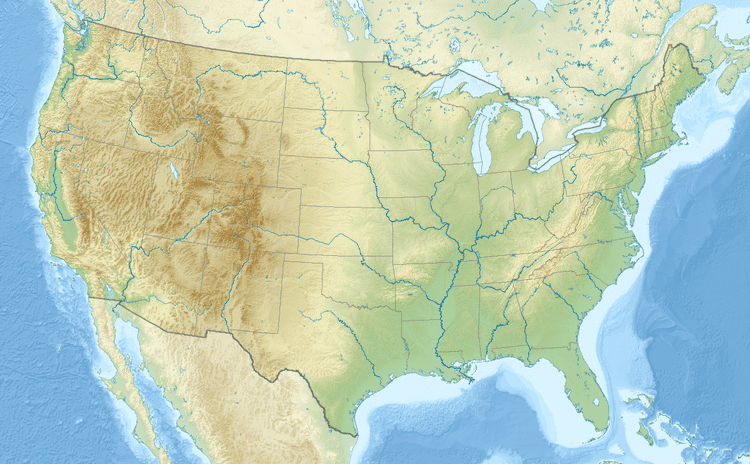Deep within the rugged landscape of southern California, nestled between the Topatopa Mountains and the Santa Susana Mountains, lies the Sespe Condor Sanctuary, a sprawling protected area dedicated to the conservation of the majestic California condor and the preservation of the region’s unique biodiversity. This sanctuary, situated within the Los Padres National Forest, is not only a crucial habitat for these magnificent birds but also a testament to the collaborative efforts of conservationists, researchers, and local communities working together to ensure the long-term survival of a species that once teetered on the brink of extinction.
Historical Context: The Decline and Recovery of the California Condor
The California condor, with its impressive wingspan and regal demeanor, has been an iconic symbol of the American West for centuries. However, by the 1980s, the species had dwindled to just 22 individuals due to a combination of factors including habitat loss, lead poisoning from scavenging carcasses killed with lead bullets, and poaching. The establishment of the Sespe Condor Sanctuary was a pivotal moment in the conservation history of the California condor, marking the beginning of a concerted effort to reintroduce captive-bred condors into the wild and protect their habitat.
Conservation Efforts: A Multifaceted Approach
The conservation of the California condor within the Sespe Condor Sanctuary involves a multifaceted approach that addresses the various threats facing the species. One of the key strategies has been the establishment of a captive breeding program, which has been instrumental in increasing the condor population. Additionally, efforts to reduce lead poisoning have included outreach programs to hunters and the promotion of non-lead ammunition, as well as the management of carcasses to prevent condors from feeding on lead-contaminated flesh.
Habitat Preservation and Restoration
The preservation of the condors’ natural habitat is another critical component of the conservation strategy. The Sespe Condor Sanctuary encompasses a diverse range of ecosystems, including oak woodlands, chaparral, and riparian zones, which provide the condors with the necessary resources for survival. Efforts to protect and restore these habitats involve collaboration with landowners, the management of invasive species, and the implementation of sustainable land-use practices.
Community Engagement and Education
Community engagement and education are vital elements of the conservation efforts at the Sespe Condor Sanctuary. By involving local communities in condor conservation, not only is there a greater sense of ownership and responsibility among residents, but there is also an opportunity to disseminate knowledge about the importance of protecting biodiversity and the simple actions individuals can take to contribute to conservation efforts. Educational programs, guided tours, and volunteer opportunities are just a few of the ways in which the sanctuary fosters a connection between people and the natural environment, highlighting the intrinsic value of conservation.
Scientific Research and Monitoring
Ongoing scientific research and monitoring are essential for the adaptive management of the Sespe Condor Sanctuary. Researchers and conservation biologists conduct regular surveys of the condor population, studying their behavior, health, and habitat use. This information is crucial for making informed decisions about conservation strategies, identifying potential threats early on, and evaluating the effectiveness of current management practices. The integration of technology, such as GPS tracking devices and genetic analysis, has further enhanced the ability of scientists to understand condor ecology and develop targeted conservation interventions.
Challenges and Future Directions
Despite the significant progress made in the conservation of the California condor, challenges persist. The ongoing threat of lead poisoning, the potential impacts of climate change on food availability and habitat quality, and the risk of collisions with wind turbines or power lines are just a few of the issues that conservationists must continue to address. Looking to the future, there is a recognition of the need for continued collaboration among stakeholders, the adaptation of conservation strategies in response to new challenges, and the engagement of broader audiences in the plight of the California condor.
Conclusion
The Sespe Condor Sanctuary stands as a beacon of hope for the recovery of endangered species and the protection of natural ecosystems. The story of the California condor’s journey from the edge of extinction to its current, albeit still precarious, status is a testament to what can be achieved through concerted conservation effort, scientific research, and community engagement. As we look to the future, it is imperative that we continue to support and expand upon these efforts, ensuring that the Sespe Condor Sanctuary remains a thriving ecosystem where condors can soar freely, a symbol of the beauty and resilience of nature.
What are the primary threats to the California condor population?
+The primary threats include lead poisoning from feeding on carcasses killed with lead bullets, habitat loss, and poaching. Conservation efforts are focusing on reducing these threats through education, habitat preservation, and the introduction of non-lead ammunition.
How does the captive breeding program contribute to condor conservation?
+The captive breeding program has been instrumental in increasing the condor population. By breeding condors in captivity and then releasing them into the wild, conservationists can augment the population size and genetic diversity, enhancing the species’ resilience and chances of survival.
What role does community engagement play in condor conservation?
+Community engagement is crucial as it fosters a sense of responsibility and ownership among local residents, encourages the dissemination of knowledge about condor conservation, and supports the implementation of practices that reduce threats to the condor population, such as the use of non-lead ammunition.



